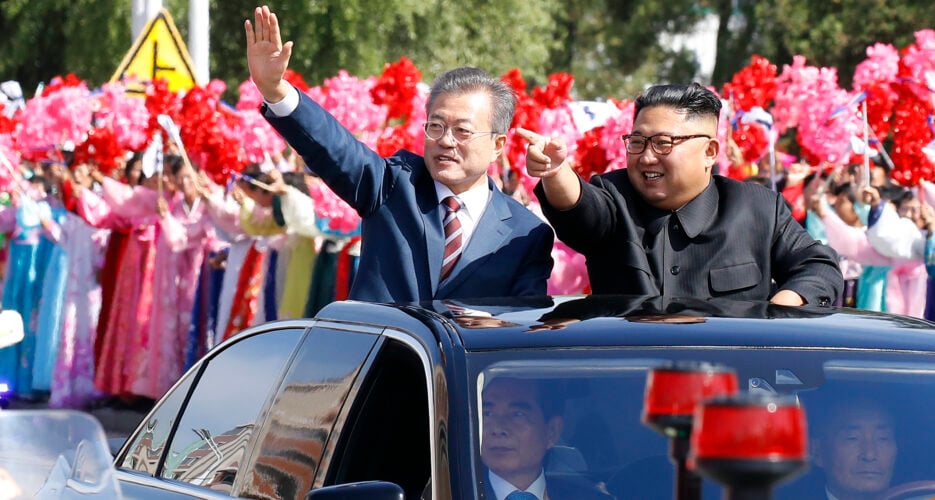How the two Koreas went from Pyongyang summitry to missile tests and acrimony
One year since a landmark meeting in the DPRK capital, little progress appears to have been made
Inter-Korean summit joint press corps
A year ago this week, South Korean President Moon Jae-in stood in front of 150,000 North Koreans at Pyongyang's May Day Stadium and claimed that a “new era of peace” had arrived on the peninsula.
The leaders of the two Koreas had that week signed the promising Pyongyang Joint Declaration, with top military officials also agreeing to an ambitious military deal -- a deal Seoul described at the time as a "de facto" non-aggression pact.
A year ago this week, South Korean President Moon Jae-in stood in front of 150,000 North Koreans at Pyongyang's May Day Stadium and claimed that a “new era of peace” had arrived on the peninsula.
The leaders of the two Koreas had that week signed the promising Pyongyang Joint Declaration, with top military officials also agreeing to an ambitious military deal -- a deal Seoul described at the time as a "de facto" non-aggression pact.
Become a member for less than $4 per week.
Unlimited access to all of NK News: reporting, investigations, analysis
The NK News Daily Update, an email newsletter to keep you in the loop
Searchable archive of all content, photo galleries, special columns
Contact NK News reporters with tips or requests for reporting
Get unlimited access to all NK News content, including original reporting, investigations, and analyses by our team of DPRK experts.
Subscribe now
All major cards accepted. No commitments – you can cancel any time.
© Korea Risk Group. All rights reserved.
No part of this content may be reproduced, distributed, or used for
commercial purposes without prior written permission from Korea Risk Group.

